A Westford native, Francis Michael Sullivan, was a major contributor in making the Veterans’ Readjustment Act of 1944, commonly referred to as the
G.I. Bill of Rights, a reality 80 years ago. We are recognizing Mr. Sullivan’s outstanding achievement in our country’s history this Memorial Day by placing a memorial stone in Freedom Park, near the location of his family home on Pond Street.
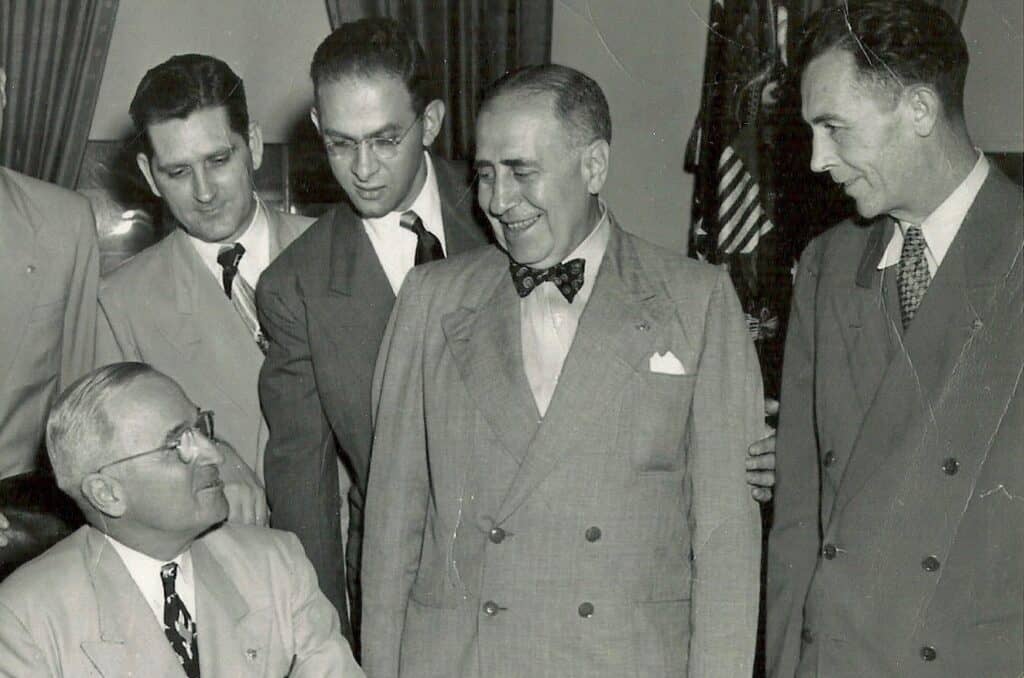
.
President Harry Truman signed an extension of the G. I. Bill, Francis Sullivan (far right) then director of the Disabled American Veterans,
The Francis M. Sullivan Memorial Dedication

The Francis M. Sullivan Monument Dedication at Freedom Park, Pond St. Westford
Sunday, May 26, 2024
8:45 am -9:00 am
Freedom Park, Pond Street, Westford, MA, 01886
The Francis M. Sullivan Monument is funded by Marisha Kazeniac Taylor,
The Dan Sullivan Family
and
Massachusetts State Representative, James Arciero.
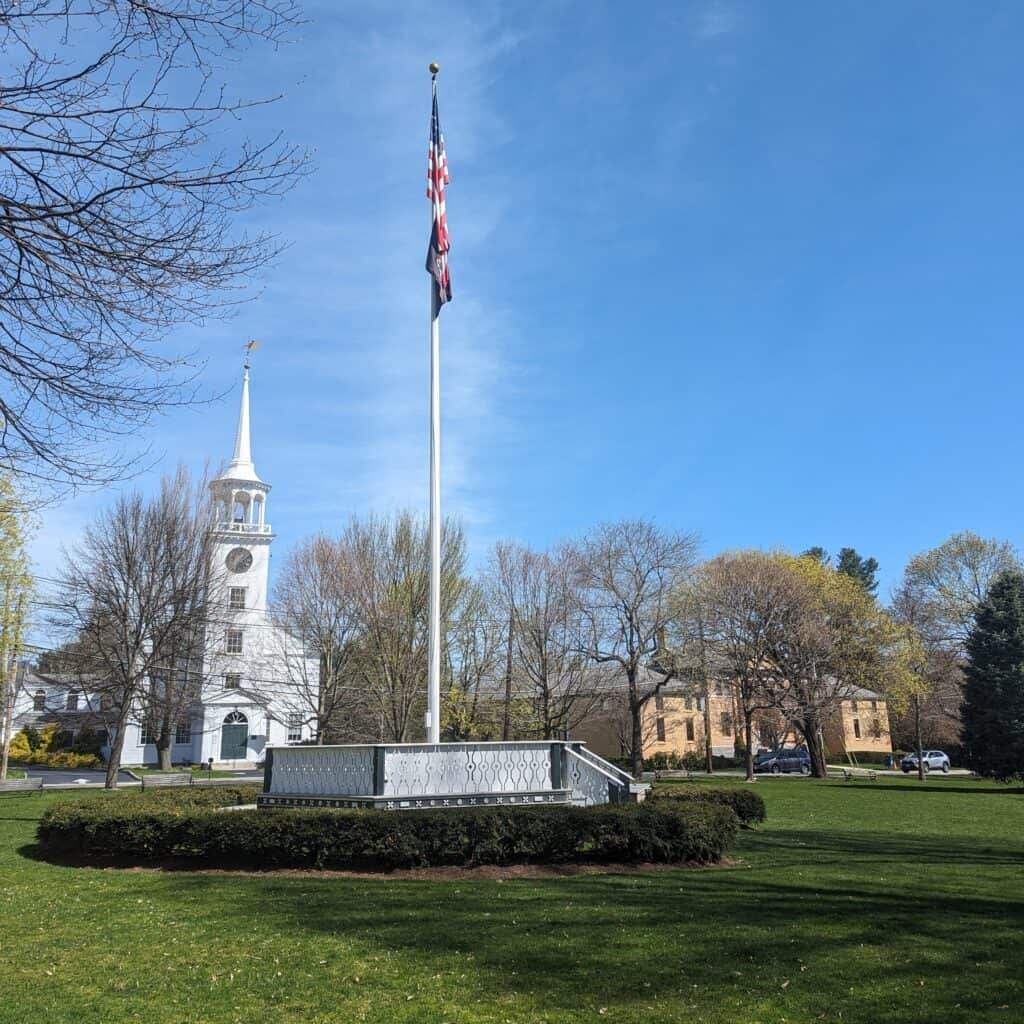
Memorial Day exercises at Westford Town Common,
Francis M. Sullivan remembered by Geoff Hall.
Sunday May 26, 2024
11am-12:00pm
Main Street and Boston Road
Westford, MA
Immediately following the Memorial Day exercises the Westford Museum
,2 Boston Road will be open. Join us for a reception with the Sullivan Family. All are invited.
Geoff Hall and Marilyn Day recently recorded an in-depth documentary on the life of
Francis M. Sullivan and the Sullivan Family of Forge Village.
Westford Notable of the Month
Francis Michael Sullivan
(1897-1954)
A boy from Forge Village whose significant contributions resulted in the G.I. Bill of Rights
By James VanBever, Board Member, Westford Historical Society
The G.I. Bill of Rights (The Servicemen’s Readjustment Act) brought profound changes to the United States. Prior to its enactment in 1944 only 160,000 Americans were attending college. By 1950, 500,000 citizens were attending higher educational institutions, half of them were veterans.
In addition to educational benefits the G.I. Bill brought important social and economic changes to the country. “Its impact on the American people, the men and women who had fought in the war were transformed by the act.” The G.I. Bill changed Americans “from poor working class citizens who worked with their hands to professionals who worked with their minds, from renters to homeowners.”
One of the main architects of this important legislation signed by President Roosevelt was a man who grew up on Pond Street in Forge Village named Francis Michael Sullivan. Francis was the son of Irish immigrants John and Nora Sullivan who emigrated to Forge Village to work at the Abbot Worsted Company. Francis attended the Cameron School and graduated from Westford Academy in 1916.
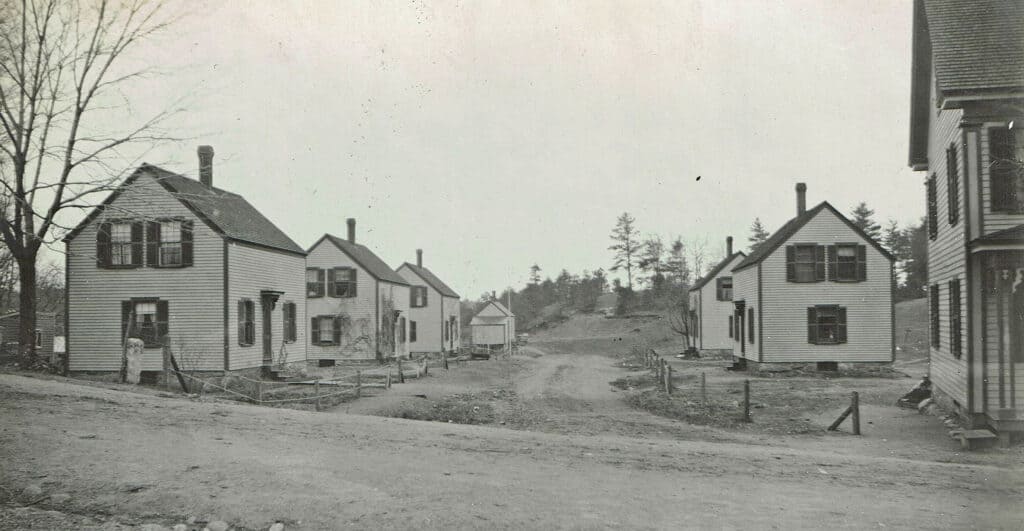
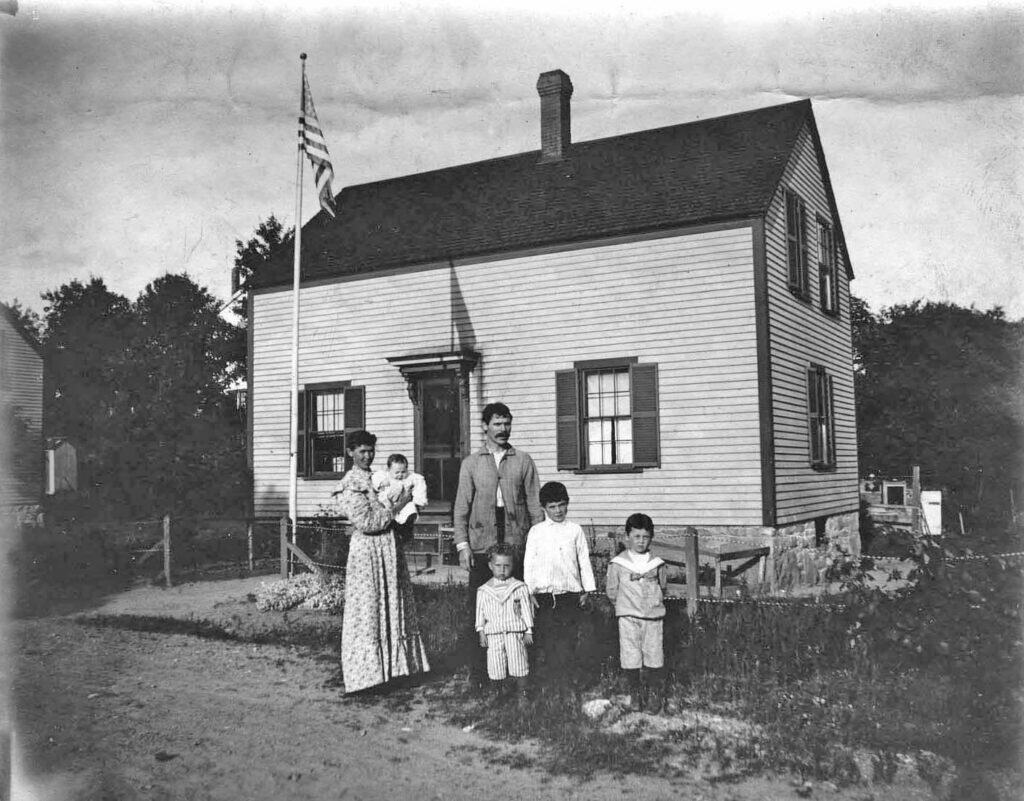
Norah and James, John Sr, John, Jr. Francis
and Mary Ellen
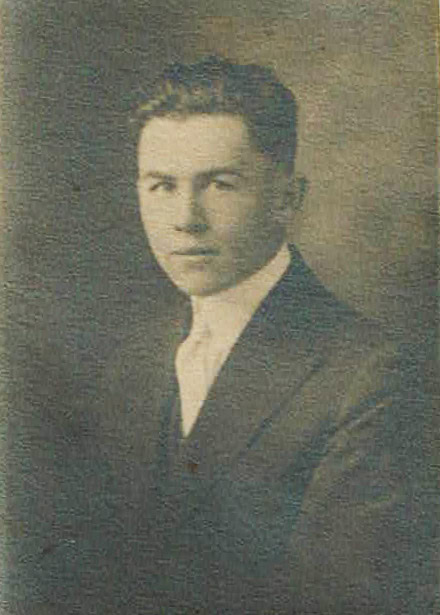
Mr. Sullivan was working as a correspondence clerk for the City of Lowell when he joined the Navy Reserves in June 1918. However, his time in the Naval Reserves was short, Sullivan was honorably discharged from the Navy on December 6, 1918. The reason for his discharge was a reduction of funding by the U.S. Congress. Mr. Sullivan attempted to return to active duty in 1920 but was denied by the Navy.
By 1920, the Forge Village native had moved to Boston and was working as a reporter for an area newspaper. He would eventually move to Waterbury, Connecticut, where he was employed as a newspaper court reporter. It was in Connecticut that he met Representative James P. Glynn of the Nutmeg state who hired Francis as a staff member in 1924. While working for Representative Glynn in Washington, DC Sullivan enrolled at George Washington University (Then known as “the National University Law School) where he earned a law degree.
Upon receiving his degree from George Washington University, Sullivan fulfilled his law degree requirements by working for Congressmen Glynn and Edward W. Goss also from Connecticut. During this time Mr. Sullivan presented cases before the Federal Communications Commission and the U.S. Court of Appeals of the District of Columbia.
Around 1940, Francis joined the legislative staff of the American Legion. In early 1943, Mr. Sullivan, then working as Acting Legislative Director for the American Legion wrote several pieces of legislation to tackle the important needs of disabled veterans returning from World War II. Sullivan had gained valuable experience drafting legislation while working for Congressmen Goss and Glynn.
W.W.II was still raging in 1943 when calls for legislation to address the needs of returning veterans were taking hold in the country. America was expecting 16 million G.I.s to return home following the end of the war. Thus, the drafting of the Servicemen’s Readjustment Act was developed to meet these needs, and Sullivan’s background in drafting legislation and familiarity with Congress were instrumental in the passing of this important Bill.
Francis M. Sullivan is given credit for gathering all the information regarding the G.I. Bill and drafting the legislation. As Acting Legislative Director of the American Legion, Sullivan had drafted separate pieces of legislation to help returning veterans such as medical assistance for disabled veterans, housing assistance for homeless G.I.s and unemployment support for returning servicemen unable to find employment.
Accordingly, the job of gathering all the information and writing one comprehensive bill would have to fall to one writer. Sullivan’s son Richard best summed up his father’s contribution to the G.I. Bill when he stated that “So while the impetus for legislation or public policy is the work of many hands, the final drafting of it is the work of one steady hand penning it all, and penning the G.I. Bill was the contribution of our father, a contribution that has been “obscured” over time”.
Richard Sullivan was not the only one who credited his father for the passage of the Servicemen’s Readjustment Act. Richard Stelle in his book “A History of the American Legion” gives credit to Francis Sullivan for gathering all the information and drafting the Bill. Also, Edith Nourse Rogers, a U.S. Representative from Massachusetts who sponsored the G.I. Bill stated on the floor of the House of Representatives following Sullivan’s death that Francis “had a large part in the writing of the so-called G.I. Bill of rights and the Veterans’ Preference Act.”
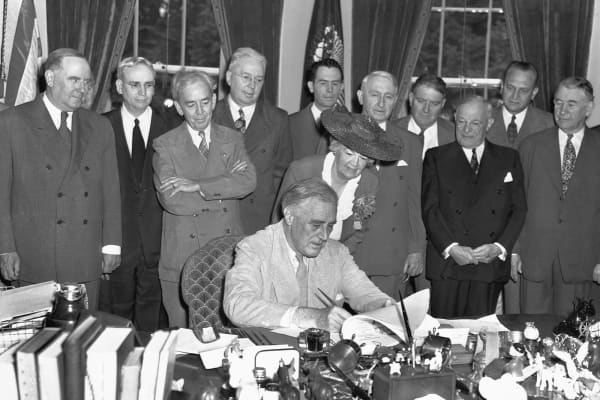
When President Roosevelt signed the G.I. Bill of Rights into law on June 22, 1944, Mr. Sullivan is in the center of the picture. Later, when President Harry Truman signed an extension of the Bill, Francis, then director of the Disabled American Veterans, was also in the picture along with Congressman John F. Kennedy from Massachusetts. As Director of the D.A.V. Sullivan also had his picture taken with President Eisenhower.
Francis Michael Sullivan died on January 24, 1954 at the age of fifty-six. Mr. Sullivan was survived by his wife Katherine Anne and his children Katherine, Francis, Richard, and Daniel. Sullivan was buried with honors at Arlington National Cemetery Washington, DC. His positive impact on the United States lives today.
Sources:
National Forum, Reginald Wilson, Vol. 75, Issue 4, Fall 1995.
“Veterans Welfare, the G.I. Bill and American Demobilization,” Journal of Law, Medicine and Ethics, Laura McEnany, Vol. 39, Issue 1.
“Forge Village Native DAV Legislative Director”, Lowell Sun, April 18, 1947, p.1.
House of Representatives Congressional Record, Wednesday, January 27, 1954.
Anne Hillyard and Dan Sullivan, Francis Michael Sullivan, A Short Biography
Richard Stelle, A History of the American Legion.
